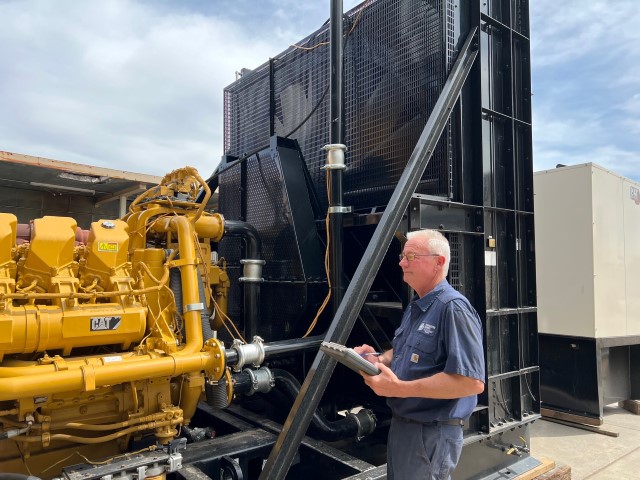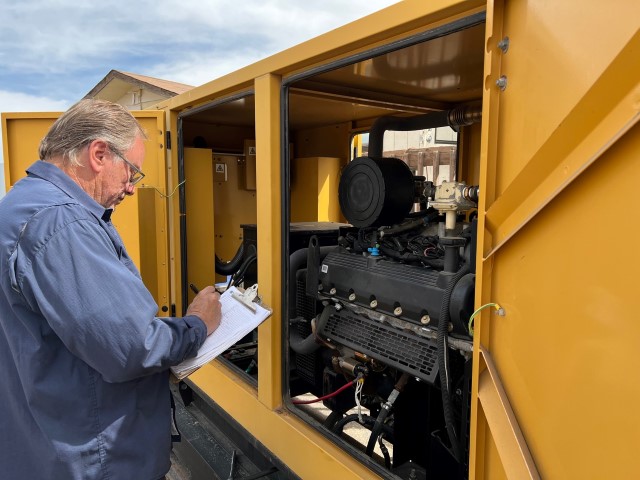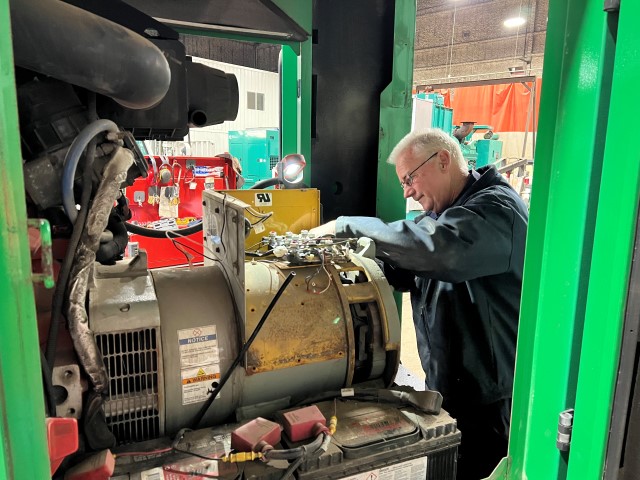GS Techs Shares Approach To Units, 31-Point Certification
Generator Technicians Share Their Approach To Assessing,Testing And Putting A Generator Through Generator Source's 31-point Certification Process
At Generator Source, new, surplus, and used generators are arriving and shipping out all the time, but it’s the daily approach and care for each generator that makes our process unique. Recently, I sat down with a couple of experienced generator technicians to learn more about their approach to a unit and how they perform the company’s 31-point certification process.
.jpg.aspx)
“Even before we run a generator there’s a lot of basics to be done,” said Brian (pictured at left), a longtime
Generator Source technician. “First, we remove the panels, check cables and wiring to make sure it will be safe to continue with any kind of startup.
“If there was anything that was added to the unit, but not on the generator now, we have to remove those excess wires,” said Bob, the other tech we visited with for this feature. “We also verify all the specs of the unit vs. what the sheet that accompanied the unit says. This would be to make sure all paperwork matches up with the unit in front of us. Serial numbers, voltages etc…”
At this point in the check-in process, the guys are also looking at the following items.
“We check the fuel and tank for water, to be sure the generator was wrapped properly during storage and/or transit, keeping water out of vital engine parts,” said Brian. “We use a product called Kolor Kut. It’s a paste that you add to the fuel, and it will turn red if it detects water.”
“We then grease the generator bearings,” added Bob. “We do this based on the hours on the unit and if the generator is due for the service.”
“Next we go over all hose clamps, tightening them where needed,” said Brian. “And then, as you might guess with any engine, we check the oil and coolant conditions (the coolant must be able to help the generator operate down to -20 degrees). Every unit gets an oil change as well as all filter changes. A smart technician will make one trip to the parts warehouse with all the filter specs, oil filters, air filters and the quantity needed, to simply work more efficiently at this point.”
.jpg.aspx)
"Not all the technicians operate in the same order on the check-in lists, but obviously, you are done when all the boxes are checked and only then, would it be safe to start the unit,” added Bob (pictured at right). “At this point in the process, the next inspection involves manually rotating the engine with two full turns by hand.”
“From there I then remove remote wires, tighten all control panel screws and start replacing the air filter as well,” said Brian. “Of course, if we encounter any concerns or problems, the check-in sheet is halted and the problem is repaired or fixed.”
“Then I like to check the barrel leads for insultation and tightness,” added Brian. “We are also doing a voltage check at this time, and more basics like inspecting and/or replacing the fan belts. Again, looking for cracks or wear and tear in the parts. Here, I’m also looking at the block heater for voltage and how many AMPS its pulling.”
“Here’s where we really have to help each other out,” continued Bob. “Locating, testing and tagging the remote start connection is key, just in case another tech ends up doing the load test.
“From here, we hit the radiator, checking for plugs or dirty conditions,” said Bob. “Other items here for the check-in list include checking the battery voltage—is it 12- or 24-volts? I’m also looking for cold water leaks before the engine is started and it warms up. These leaks must be located with a cold engine.”
“We are making headway in the check-in process, but we are not done yet,” said Brian. “We still need to check the fuel racks where they apply (Detroits), check the battery charger (voltage and AMPS), check the battery hold down clamps (particularly on the trailer units) and finally, we highlight any changes needed and turn in our check-in sheet.”
“Obviously, the entire check-in process might take a couple hours, but if you discover an extra need or small repair, the process could take the full day,” said Bob. “Now that we have checked the unit for issues and changed oil, coolant, filters, hoses, inspected all wiring and cables, it is now safe to start it up and think about a load test.”
“We are now ready for a load test,” added Brian. “We start the unit, monitor temperatures, watch for any coolant, or oil leaks. Now we are going to watch the unit run. Then we are going to do an 80% load rating. Our team takes video of the load test to share with potential clients.”
“At this time, we are also monitoring all gauges, comparing with the load bank test unit, temperatures and voltage,” continued Bob. “We are also adjusting gauges if there is an issue, checking the alternator and battery charger while its running. During the load test, we also verify pre-alarms, shutdowns, and the auto start. We also drain the oil again to search for any sign of water.”
.jpeg.aspx)
In addition to following the manufacturer’s inspection guidelines, no generator ever leaves our yard without passing this 31-point inspection to certify it and guarantee customer satisfaction. Every generator also ships to its new home with all new filters, fluids, batteries, and our stamp of approval. We strive to ensure that the customer is getting the best possible generator for their money.
We work hard to ensure our quality standards are being met and our efforts are rewarded each day with our customers’ satisfaction and assurance that their generator will operate when and as it should. We take great pride in knowing that our equipment will work on time, every time.
Brian La Rue
| 5/11/2023 8:52:59 AM
|
0 comments
Tags:
Certification,
Change,
Commercial,
Demand,
Diesel,
Electricity,
Filters,
Generation,
Generator,
Generators,
Grid,
Industrial,
Industry,
Infrastructure,
Oil,
Outages,
Power,
Technicians